One of these pioneers was Henri August, who built and flew the first Romanian glider. After he experimented with small-scale models during the second half of 1907 and early months of 1908, he completed a full-scale glider by the spring of 1909.
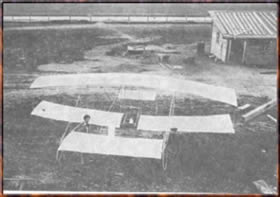
The Romanian aircraft industry
|
|
|
|
|
|
|
|
|
|
|
|
|
|
|
|
|
|
||||
In March 1909, the glider flew several times, reaching heights of up to 7 meters, while being towed by a car. It was the very first time a machine heavier than the air built by a Romanian had lifted from the ground.The first aircraft arrived in Romania in 1909, when the famous French pilot Bleriot came to fly a couple of times in front of the amazed crowds. Pretty soon, various Romanian designs of planes were being tried and tested to see if they were of any value.There had been some interest in flying even before Bleriot's demonstarations, but after the Frenchmen's airshow the work really kicked off. |
 |
|||
|
||||
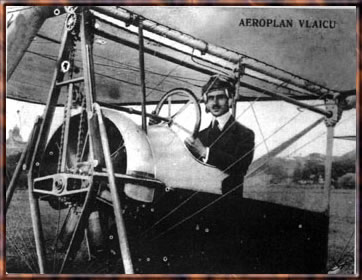 |
. These more or less successful experiments led to the eventual development of the "Vlaicu 1" and "Vlaicu 2" aircraft, which made its first flight in April 1911. It was the first fully functional plane designed, built and flown entirely in Romania. In June 1912, Aurel Vlaicu, the plane's designer and pilot, won the Viena-Aspern aviation race with the "Vlaicu 2". He was
working already on his next design : "Vlaicu 3", which was supposed to be powered by a superior 80 HP "Gnome" engine, greatly improving performance. Unfortunately, on the 13th of September
1913, Vlaicu died when he crashed with his "Vlaicu 2" plane during an attempt to cross the Carpathian mountains. |
|||
|
||||
The last airplane actually built before the war was the creation of George Gramaticescu. It was a single-seat monoplane ( initially it was supposed to be a biplane, but due to unknown reasons it was completed as a monoplane ) powered by an 80 HP, air-cooled, radial Anzani engine. Gramaticescu didn't live to see his creation taking off, as he died in France in 1913, but his mother hired a group of French engineers and pilots who finished the plane according to his sketches by the spring of 1914.On the 30th of April 1914, the aircraft flew for 26 minutes and 30 seconds, demonstrating its qualities in front of two French specialists. |
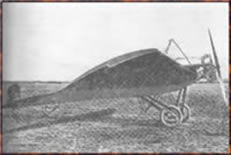 |
|||
|
|
|
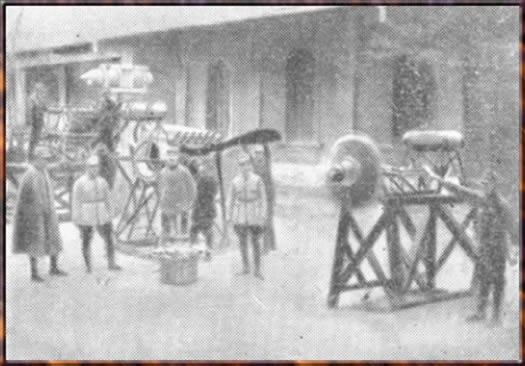
Testing the engines at the General Depot of the Aeronautics. Iasi 1917
|
Interwar projects and innovations
After the war ended, though the pioneering era was about over, there was still no shortage of inventors and enthusiasts ready to try to build new flying machines and test new ideas. Amongst them was Gheorghe Botezat, a Romanian college teacher, which emigrated to America after the first World War. He settled down in Dayton, Ohio where he resumed and completed a helicopter. His machine consisted of an aluminium frame with a four-wheel landing gear. At each end of the frame there was a six-bladed propeller which were to provide lift. The hall machine weighed in 1650 kg and was powered by a 170 HP radial Gnome-Rhone engine. |
||||
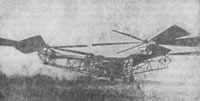 |
The first test flight took place on the 18th of December 1922, when the helicopter rose to about two meters for 1 minut and 42 seconds. On the 19th of January it managed to reach 1.22 meters with two men on board. A month later, on the 21st of February 1922, the maximum height of 4.5 meters could be held for 2 minutes and 45 seconds, also with a crew of two men. |
|||
|
||||
After several tests it was clear that it wasn't powerful enough for the prototype to take-off, but when Partenie requested a better engine, the "Ministry of Air and Navy" refused to comply. In the end, the helicopter did make it bearly off the ground, but without a more powerful engine it couldn't demostrate its potential. Repeated pleas at higher levels fell on death years, as some narrow-minded official even wrote to Partenie to tell him that "Even if the helicopter could be built, it is of no interest to us from a tactical point of view...". |
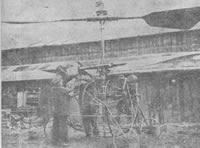 |
|||
|
||||
The three leading companies are born : IAR, SET and ICAR
|
||||
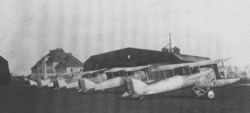 |
The Proto-1 and Proto-2 trainers followed, and some 25 Proto-2's were eventually built . It is reported that in 1924 the "Schiell Brothers" company, which was based in Brasov, also completed the RA.Bo-1 prototype, which was subjected to ground tests. Unfortunately, the company abandoned the project and later quit aircraft manufacturing completely. |
|||
|
|